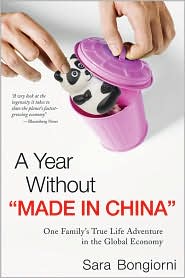A major topic for the Second Presidential Debate, moving production jobs back to the U.S. from China was mentioned many times. But what would really be involved in the process of doing this, and how would it affect us as a country? Here are the top facts you need to know:
Production costs would be difficult to compete with
With lower costs of living in many developing countries the fact is that production values are simply cheaper in other areas than can be afforded in the US. As Leslie T. Chang states in her TED Talk (shown above) it’s not because we are lowering someone’s quality of life, but rather simply a difference in expectations and how we consume goods. Bringing all basic level production back to the US as it was in the past would require a substantial shift in expectations and costs for millions of people around the world, including the US, and may be difficult at best to compete with.
It would require extensive legal changes to affect business practices

In order to compete with international production costs the process of producing goods locally must be made more appealing to businesses. To do that, though, additional legislation in areas such as taxes, leniency, or other related fields will most likely need to be passed in order to allow for companies to find domestic production more appealing than overseas outsourcing. Additionally shifts in trade may cause international distress in terms of trade agreements or other factors that may not be readily known to the public. As such great legal change would be necessary, which could be a very lengthy and costly process that cannot be driven by the Executive branch alone.
It may unbalance the global economic situation
With the global economy already teetering on collapse following the 2008 financial crisis and many countries barely being able to start making a recovery any upsetting to the global business scale could prove catastrophic. That said, while job creation is important, making a shift in the near future could plunge the US economy even further downhill and cause more harm than good – especially with US currently over 16 trillion dollars in debt. If we were to start paying back $1 every second of every day (and there’s no interest) it would take over 507,000 years just to pay it off.
It would require educational reforms

In order to achieve a realizable difference in a production aspect it would need, as Obama put it, to focus on “high skill, high paying jobs”. To do that our educational system would need to be better to prepare individuals for such jobs, with long-term goals in place. Low skill, low paying jobs may be possible, however would be extremely difficult to compete with the global market on. To achieve this goal, though, educational reform with a particular focus in mind would be necessary – something not all school districts (and parents) may not necessarily be happy about.
The socio-economic status of many families would be affected, both in good and bad ways

It’s a well-known fact that the US has had an extensive trade imbalance with China in recent years, with data from the US Census Bureau only verifying this. What this means for us as consumers, though, is that we are relying heavily upon China for many of our consumer goods. For instance, it is estimated that roughly 70 to 90 percent of all Christmas gifts each year are made in China. Want to grab a pair of PayLess Shoes? Made in China. Want a toy from a Happy Meal? Made in China. Even toy soldiers from the Tower of London are more often than not, you guessed it, made in China. By shifting away production to local areas we would have to accept potentially higher costs of goods that, which generating jobs, may also cause the cost of living to skyrocket and make the job generation irrelevant. Balancing these aspects of job creation with consumer good availability is one of the primary limiting factors behind easily shifting jobs back to domestic areas. For a glimpse as to what this might mean check out the story “A Year Without ‘Made In China'”, or at least the Reuters report on it.
It would take time

Production has slowly shifted from local manufacturing to the global market over a number of years, spanning decades of business practices and international negotiations to develop the structure that exists today. Even if a US President were to begin the process of shifting jobs back to the US it may be an equally long time to achieve any realizable gain, something that may not be achievable in a single term and would require extensive dedication and long-term planning to accomplish.
It may not necessarily expand the number of jobs
As stated in the Forbes article by Dan Ikenson titled “Outsourcing for Dummies” (view here), importing additional goods from a foreign country does not necessarily equate directly to the loss of jobs – in fact, by rising imports we are in fact creating jobs for people in areas such as port operations, logistics, warehousing, retailing, designing, engineering, manufacturing, lawyering, accounting, and many others. By reducing our overall imports we could be not necessarily creating jobs but shifting job distribution, causing some high-skilled jobs to become obsolete to make way for manual labor. Obama looks at that somewhat in the ad above, looking at balance vs pure labor shifts.